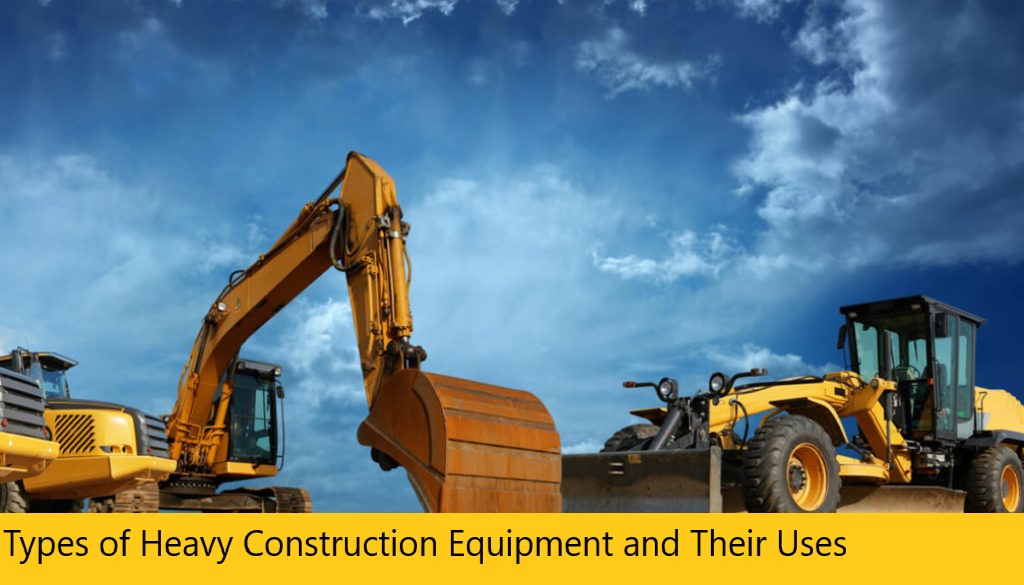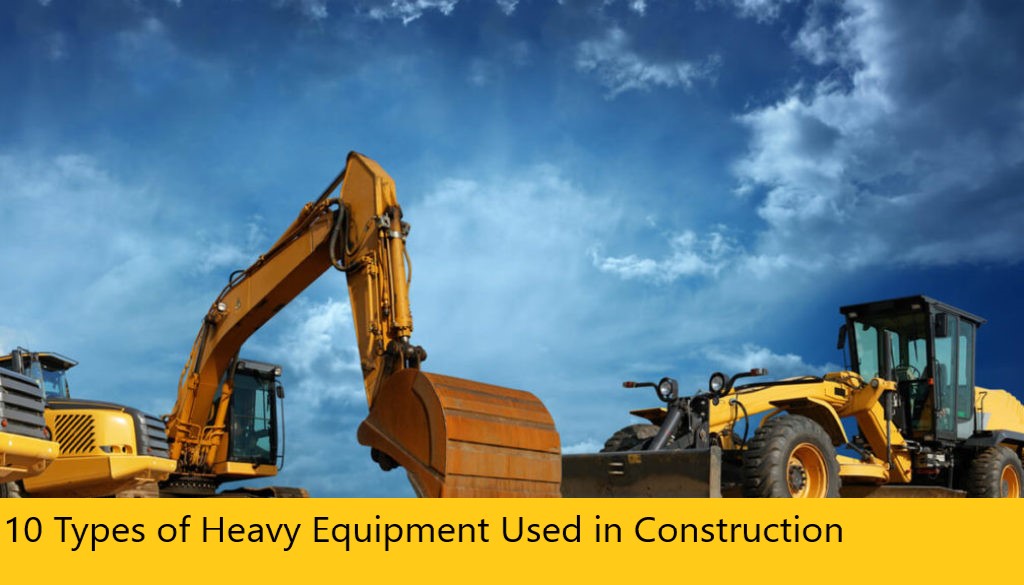Types of Heavy Construction Equipment and Their Uses
Types of Heavy Construction Equipment and Their Uses – In 2018, people bought more construction equipment than ever, thanks to a growing number of commercial, residential, and industrial projects that require heavy-duty tools and machinery to get the job done. Whether you’re working hard at a construction site, conducting road maintenance on a busy highway, or searching for the right tool for your large-scale landscaping project, there is a piece of equipment out there to make the work both easier and safer.
In this guide, we’ll discuss some of the most common types of heavy equipment and their applications.
1. Articulated Trucks
Articulated trucks are a type of heavy-duty dump truck that many praise for their versatility and adaptability. Unlike rigid haulers, articulated trucks consist of both a cab and a narrow trailer, or dump box. The two connect via a pivoting hinge. They are ideal for applications on challenging worksites with little to no paved roads, steep slopes, slippery or sandy surfaces, or low ceiling height.
You’ll find these at many types of job sites, including:
- Mining
- Recycling and scrapping
- Material and aggregate hauling
- Utility construction
Always match an articulated truck rental or investment to the size and type of load it will be hauling.
2. Asphalt Pavers
Asphalt pavers are usually accompanied by dump trucks carrying asphalt, which moves the material into the paver. Once it’s full, the asphalt paver uses dispersion augers to disperse the asphalt across a leveled surface. Then, it rolls it flat with a hydraulic cylinder, creating a solid, stable place to drive or walk.
You can use these pavers to lay asphalt on places such as:
- Public and private roads
- Driveways
- Parking lots
- Bridge decks
- Recreation courts
- Industrial sites
- Building construction
Asphalt pavers are available in a variety of paving widths and speeds.
3. Backhoe Loaders
A backhoe loader is a single piece of equipment that can function as either a backhoe, a tractor, or a loader. The durable backhoe is located on the back of the machine, while the loading mechanism is in the front. The central operating machine is the tractor.
Because it’s capable of handling so many different jobs, you can use a backhoe loader for things like:
- Farming
- Excavation
- Construction
- Hauling
- Digging
4. Boom Lifts
Boom lifts are a type of aerial lift mechanism. You might have also heard of it referred to as a basket crane or cherry picker. These attachments allow workers to reach elevated work areas but are not limited to only industrial or construction projects.
They are versatile and used across a variety of industries, including:
- Forestry
- Construction
- Painting
- Farming or harvesting
- Window cleaning
- Fire fighting
There are several different types of boom lifts, including telescoping and articulating. Boom lifts are suitable for one or more workers at a time, depending on the size of the bucket or platform.
5. Cold Planers
Cold planers are a type of heavy equipment for construction that utilize rotating drums and carbide cutters to mill pavement or asphalt. You can use a cold planer for either minimal or in-depth removal. Because pavement and asphalt milling creates a lot of dust, most cold planers utilize a water system to maintain a clean and safe work environment.
There are many reasons why one might use a cold planer to mill a roadway, such as:
- Recycling asphalt for new roads or other projects.
- Creating rumble strips for use along highways.
- Repairing existing damage.
- Smoothing land before paving to minimize any future potholes or cracks.
Read More : Mavericksystemscorp.com

Like most heavy-duty equipment, cold planers are available in various sizes to suit several types of projects. Smaller machines are easily navigable and suitable for minor milling projects, while large machines are more challenging to navigate but can tackle large-scale projects with ease.
6. Compactors
Plate compactors use a heavy, vertically vibrating plate to crush and compact a surface into a level, flat area. The force behind the plate and the quick and repetitive movements work to break down and compact debris. In addition to industrial applications, you can also use a plate compactor to flatten an expanse of soil, sand, or gravel.
Depending on your application, choose between a single, reversible, or heavy-duty plate compactor:
- Single plate: Single plate compactors are suitable for small-scale asphalt or building projects, like home renovations or laying sidewalks and driveways.
- Reversible plate: For projects that require more versatility, reversible plates operate in multiple directions.
- Heavy-duty plate: Heavy-duty plate compactors are the best option for large-scale industrial, construction, or roadway projects.
7. Compact Track and Multi Terrain Loaders
You can use both a compact track loader and a multi-terrain loader to transport heavy worksite materials. The two machines look and function similarly, but they are not the same. Compact track loaders are intended for more rugged, heavy-duty use than a multi-terrain loader. However, that’s not to say a multi-terrain loader isn’t powerful or effective — it’s just better suited for terrains that require more care, like sod or turf, while the compact track loader can handle more challenging surfaces like rocks, mud, and sand.
While each offers an unparalleled level of versatility and traction, you must consider job site conditions when choosing a piece of loader equipment.
8. Dozers
Bulldozers, also known as track-type tractors and crawlers, are critical pieces of machinery for several types of projects, including:
- Farming
- Land clearing
- Road construction
- Demolition
- Home renovation
Dozers use a heavy-duty track to move with blades that can push rocks, building materials, debris, sand, snow, or dirt. There are a few different types of dozer blades, including the flat, edgeless straight blade, curved universal blade, and semi-universal combination blade.
9. Draglines
Draglines are a type of large-scale excavator used for reaching extensive depths at surface mining sites, above ground excavation sites, and more. Draglines function using a tall boom arm equipped with wire-based drag and hoist ropes. These ropes work together to move an attached bucket to and from its point of application. Once in place, the dragline operator controls the bucket so it can collect and move debris by dragging it across the surface.
Because they are so tall and heavy, many draglines are assembled on the worksite rather than transported, though there are smaller models available.
10. Drills
Rotary blasthole drills are a type of heavy equipment used for drilling holes at mine sites. Autonomous drills are a growing trend among equipment handlers because they have built-in features that can help you complete projects quickly and safely.
For example, automated drills today might feature:
- Depth tracking
- Built-in cameras
- Automatic leveling, retracting, and drilling
- HVAC systems to cool while limiting dust exposure
Non-automated drills offer just as much power, but these features can enhance the comfort and safety of your works as well as the overall productivity of the equipment.
